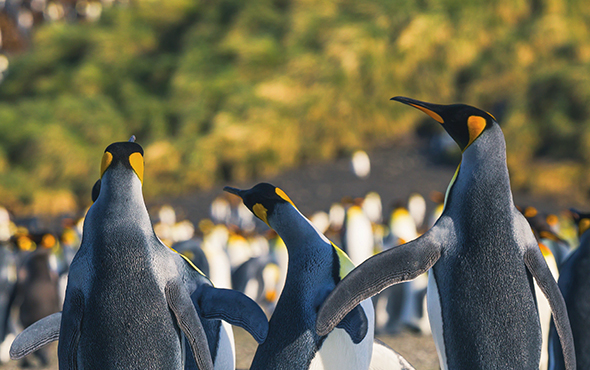Reasons to Go
How to Take Photographs in Antarctica and the Arctic
With 40-plus years of experience as a photographer and author, A&K photo coach Rick Sammon knows a thing or two about shooting photographs in the spectacularly snow-clad polar regions of Antarctica and the Arctic. Both regions offer an abundance of incredible photography opportunities found nowhere else on earth, and yet taking winning photos in Antarctica and the Arctic isn’t as easy as it looks. Luckily, travellers cruising on A&K Luxury Expedition Cruises are at a unique advantage; they arrive in the company of a dedicated A&K photo coach, like Rick, who shares lectures at sea and pointers for capturing the best photos, in the field and right there in the moment.
We talked with Rick about some of his favorite photos from Antarctica and the Arctic and got his expert tips for elevating your photography skills on a luxury polar expedition cruise.

Embrace cloudy days
Overcast days can help enhance the power and drama of a place, so don’t worry if it’s not sunny every day. Underexposing an image, such as this blue iceberg scene in Antarctica, can also add to the mood of a scene, as can certain photo processing techniques.

Focus on the story the eyes are telling
When an animal’s eyes are in focus and looking directly at you, you get an image with impact, such as this portrait of a Weddell seal in Antarctica. Even if you have an autofocus camera, it will not always account for this. So, be sure to set the focus on the eyes.

Reduce glare with a polarizing filter
Some of the icy, snow-covered scenery in the polar regions, such as here in the Arctic, will leave you breathless. When photographing ice and water, I recommend using a polarizing filter, which reduces glare. I also recommend setting your camera’s "highlight alert" (overexposure warning) to ON.

Use a telephoto lens to get closer
In wildlife photography, the main idea is to understand and respect subjects, like this walrus in the Arctic. To keep a safe and respectful distance and still get that amazing photo, pack a telephoto lens, such as a 70-200mm or 100-400mm. Use a wide aperture to blur the background so the subject stands out in the frame.

Inject energy with a wide-angle lens
Lenses can help you tell your story of adventure. I took this photograph in Antarctica from the shore using a fisheye lens. I suggest bringing wide-angle lenses for landscape, seascape and icescape photographs; and telephoto lenses for wildlife photographs. That said, today’s smartphone cameras can tell a great story as well.

Capture action with a fast shutter speed
Action shots often have more impact than portraits. To freeze the action of wildlife, for example, use a fast shutter speed, perhaps 1/500th of a second. Also use focus-tracking to track the subject right up to the moment of exposure.

Include details at the edge of a scene
During Zodiac rides from ship to shore, be on the lookout for interesting ice formations. Use a foreground element, as I did here, to add a sense of depth to the photograph. Use a wide-angle lens and small aperture to get the entire scene in focus.

Have your camera ready
You never know what’s going to pop up on an Antarctic shore excursion. This leopard seal is a prime example of an unexpected sighting. To get the shot, always have your camera handy and be ready to photograph.
 The Americas
The Americas Europe, Middle East and Africa
Europe, Middle East and Africa Australia, NZ and Asia
Australia, NZ and Asia





 The Americas
The Americas
 Europe, Middle East and Africa
Europe, Middle East and Africa Australia, NZ and Asia
Australia, NZ and Asia